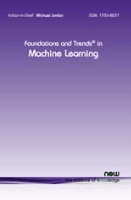
Foundations and Trends in Machine Learning
Scope & Guideline
Advancing the Frontiers of Machine Learning Knowledge
Introduction
Aims and Scopes
- Theoretical Foundations of Machine Learning:
The journal emphasizes rigorous theoretical approaches to understanding machine learning algorithms, including topics such as PAC-Bayes bounds, Riemannian geometry, and approximate message passing. - Practical Applications and Frameworks:
Papers often explore practical implementations of machine learning techniques, such as automated deep learning, reinforcement learning, and federated learning, providing frameworks that are user-friendly and accessible. - Interdisciplinary Approaches:
The journal covers interdisciplinary themes that intersect machine learning with other fields, such as statistics, economics (e.g., auctions), and causal analysis, promoting a broader understanding of machine learning's implications. - Emerging Techniques and Technologies:
Emerging methodologies like graph neural networks, dynamical variational autoencoders, and automated theorem proving are core areas of focus, showcasing innovative approaches in the field.
Trending and Emerging
- Causal Inference and Fairness in Machine Learning:
The emergence of causal fairness analysis signifies a growing interest in understanding the implications of machine learning decisions in societal contexts, emphasizing the need for fairness and accountability. - Automated and Autonomous Machine Learning:
The development of frameworks like AutonoML indicates a trend towards automating the machine learning process, making it more accessible to non-experts and enhancing efficiency in model training and selection. - Advanced Reinforcement Learning Techniques:
The focus on advanced reinforcement learning methodologies, including model-based approaches and risk-sensitive strategies, suggests a shift towards more complex and effective learning paradigms in dynamic environments. - Graph Neural Networks and Their Applications:
The increasing attention to graph neural networks, particularly their applications in natural language processing, highlights the growing recognition of the importance of structured data and relationships in machine learning.
Declining or Waning
- Traditional Statistical Methods:
There is a noticeable decline in publications focusing solely on traditional statistical methods as the field shifts towards more complex, data-driven approaches that incorporate machine learning techniques. - Basic Reinforcement Learning Techniques:
Basic reinforcement learning topics have seen a decrease as more sophisticated and nuanced approaches, such as model-based reinforcement learning and risk-sensitive methods, gain popularity. - Linear Models and Simpler Algorithms:
The journal seems to be moving away from discussions centered on simpler algorithms and linear models in favor of more advanced techniques that leverage deep learning and complex architectures.
Similar Journals
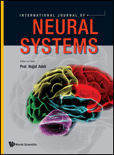
International Journal of Neural Systems
Exploring the Frontiers of Neural Systems ResearchThe International Journal of Neural Systems, published by World Scientific Publishing Co Pte Ltd, is a prestigious peer-reviewed journal dedicated to the dynamic field of neural systems research. With an ISSN of 0129-0657 and an E-ISSN of 1793-6462, this journal serves as a vital resource for researchers, professionals, and students interested in the intersections of computer science, neural networks, and communications. Noteworthy for its impact, the journal has achieved impressive rankings in 2023, positioned in the Q1 quartile for both Computer Networks and Communications as well as in the miscellaneous category of Medicine, highlighting its interdisciplinary significance and broad relevance. The journal's Scopus rank places it at #33 out of 395 in its category, reflecting its influence and reach within the academic community. While the journal is not open access, its contributions to advancing the understanding of neural systems are invaluable, offering a platform for disseminating cutting-edge research and fostering collaboration among scholars. Since its inception, the International Journal of Neural Systems remains committed to excellence and innovation in its published content, making it an essential subscription for everyone involved in this exciting and rapidly evolving field.

JOURNAL OF INFORMATION SCIENCE AND ENGINEERING
Empowering Research in Information and Engineering.JOURNAL OF INFORMATION SCIENCE AND ENGINEERING, published by the Institute of Information Science in Taiwan, is a pivotal platform for the dissemination of innovative research in the multidisciplinary fields of information science and engineering. Established in 1993, the journal primarily focuses on areas such as library and information sciences, human-computer interaction, hardware and architecture, as well as computational theory and software development. Despite holding a current Q4 ranking in several categories, the journal demonstrates significant potential for growth, particularly in computation and software systems, as evidenced by its Scopus rankings and percentiles. Researchers, professionals, and students will find this journal to be an invaluable resource to stay abreast of evolving theories and technologies in information science. The journal is accessible through traditional subscription models, fostering a broad academic outreach. It serves to enhance knowledge-sharing and collaboration within this dynamic and ever-evolving field.

IEEE Computational Intelligence Magazine
Innovating the Future of Artificial Intelligence ResearchIEEE Computational Intelligence Magazine, published by the esteemed IEEE-INST ELECTRICAL ELECTRONICS ENGINEERS INC, is an essential resource for researchers and professionals in the fields of Artificial Intelligence and Theoretical Computer Science. With a robust Q1 ranking in both categories for 2023, this magazine stands out as a leader in disseminating cutting-edge research and innovative applications within computational intelligence. As an invaluable conduit for knowledge, it covers a diverse range of topics, including but not limited to machine learning, neural networks, and data mining. The magazine is particularly recognized for its interdisciplinary approach, bridging gaps between theory and application while contributing to advancements in technology and society. Although it does not offer open access, the insights provided are critical for staying at the forefront of this rapidly evolving discipline. Join a community of like-minded scholars and practitioners by exploring the latest findings and trends published from 2006 to 2024, operating from its headquarters at 445 Hoes Lane, Piscataway, NJ, United States.

Frontiers in Computer Science
Fostering collaboration for groundbreaking advancements in technology.Frontiers in Computer Science is a premier open-access journal published by Frontiers Media SA that has rapidly established itself as a prominent platform for scholarly research in the diverse and evolving field of computer science. With a notable impact factor reflecting its high citation rates, this journal aims to disseminate innovative findings and groundbreaking studies across multiple subdisciplines, including Computer Science Applications, Computer Vision and Pattern Recognition, and Human-Computer Interaction. Since its inception in 2019, and with a consistent trajectory from 2019 to 2024, it has garnered accolades, achieving Q2 ranking in several categories and an impressive Q1 in miscellaneous areas of computer science. Researchers, professionals, and students alike are encouraged to contribute to this dynamic journal that serves as a vital resource for advancing knowledge and fostering collaborative dialogue in the global computer science community. Frontiers in Computer Science is committed to providing open access to research, promoting unrestricted sharing of ideas and fostering innovation at the intersection of technology and society.
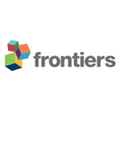
Frontiers in Neurorobotics
Shaping the Future of Robotics with Cutting-edge ResearchFrontiers in Neurorobotics is a leading open access journal that bridges the fields of artificial intelligence and biomedical engineering, dedicated to advancing the understanding and application of neural mechanisms in robotics. Published by FRONTIERS MEDIA SA in Switzerland, this journal has been disseminating innovative research since its inception in 2007. With an aim to foster interdisciplinary collaboration and share cutting-edge findings, Frontiers in Neurorobotics holds a commendable position in the academic landscape, ranking in the Q2 category for both Artificial Intelligence and Biomedical Engineering as of 2023. Researchers will find it particularly valuable due to its broad scope, which encompasses everything from theoretical frameworks to practical applications in neurorobotics. The journal is committed to open access, ensuring that its contents are readily available to a global audience, thus enhancing visibility and engagement with trailblazing research in this dynamic field.

PeerJ Computer Science
Leading the Charge in Scholarly CommunicationPeerJ Computer Science is a leading open access journal published by PEERJ INC, dedicated to the field of computer science. Since its inception in 2015, it has made significant strides in promoting scholarly communication and accessibility to cutting-edge research. With an impressive impact factor reflected by a Q1 ranking in the Computer Science (miscellaneous) category and a Scopus rank of 51 out of 232, this journal stands at the forefront of its field. The journal's open access model ensures that groundbreaking findings are readily available to researchers, professionals, and students alike, fostering collaboration and innovation in the ever-evolving landscape of computer science. As it continues to publish until 2024 and beyond, PeerJ Computer Science remains an essential resource for those seeking to stay ahead in their research and practice.

CONNECTION SCIENCE
Empowering Scholars to Shape the Future of TechnologyCONNECTION SCIENCE, published by Taylor & Francis Ltd, is a premier open-access journal in the fields of Artificial Intelligence, Human-Computer Interaction, and Software Engineering, with an impressive history dating back to 1989. With an aim to foster innovative research and breakthroughs, this journal serves as a vital platform for scholars and practitioners seeking to publish and disseminate their findings. As of 2023, CONNECTION SCIENCE proudly holds a Q2 ranking in all three categories, reflecting its significance and influence within the academic community, supported further by robust Scopus rankings placing it in top percentiles across the disciplines. In addition to its extensive service to the global research community, it has transitioned to open access since 2022, enhancing the accessibility of high-impact research to a wider audience. For anyone involved in these dynamic fields, CONNECTION SCIENCE is crucial for keeping up with trends, theories, and practical applications that drive the future of technology and artificial intelligence.

NEURAL PROCESSING LETTERS
Showcasing Cutting-Edge Developments in Neural Processing.NEURAL PROCESSING LETTERS, published by Springer, is a prestigious journal dedicated to the interdisciplinary fields of Artificial Intelligence, Computer Networks and Communications, Software Engineering, and Neuroscience. Established in 1994, the journal has built a solid reputation over the past decades, showcasing innovative research and developments that significantly contribute to the advancement of these dynamic areas. With a 2023 Scopus quartile ranking of Q2 in Artificial Intelligence and Computer Networks and Communications, and a Q3 ranking in Neuroscience, this journal occupies an important niche for professionals and researchers alike. The journal’s impact is further evidenced by its competitive Scopus ranks, positioning it within the top 60th percentile across its categories. Researchers looking for a platform to disseminate their findings in the intersection of technology and neuroscience will find NEURAL PROCESSING LETTERS an invaluable resource. For additional engagement and visibility, the journal supports various access options; however, it's important to note that it does not currently operate under an open access model. For submissions or queries, the journal can be reached at its headquarters in Dordrecht, Netherlands.
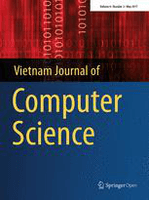
Vietnam Journal of Computer Science
Advancing knowledge in Vietnam's computer science landscape.Vietnam Journal of Computer Science, published by World Scientific Publishing Co Pte Ltd, serves as a prominent platform for researchers and professionals in the rapidly evolving field of computer science. Launched as an Open Access journal in 2013, it aims to disseminate high-quality research across various subfields, including Artificial Intelligence, Computational Theory and Mathematics, Computer Vision, and Information Systems. With its ISSN 2196-8888 and E-ISSN 2196-8896, the journal provides valuable insights and contributes to the growing body of knowledge in computer science, particularly in Southeast Asia. Despite its relatively recent establishment, the journal has achieved significant rankings, including Q3 status in multiple categories and notable visibility in Scopus metrics, evidencing its commitment to fostering innovative research. This journal is essential for those looking to stay at the forefront of computational advancements and applications, particularly in Vietnam and beyond, facilitating an engaging dialogue among scholars and industry professionals.
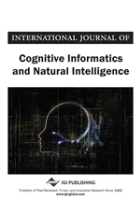
International Journal of Cognitive Informatics and Natural Intelligence
Fostering Collaborative Insights in Cognitive TechnologiesThe International Journal of Cognitive Informatics and Natural Intelligence, published by IGI Global, is an essential resource for researchers and professionals exploring the intersections of cognitive informatics, artificial intelligence, and human-computer interaction. Since its establishment in 2007, this journal has focused on advancing the understanding of cognitive systems and their applications in natural intelligence, contributing significantly to the fields of software engineering and interface design. Operating out of the United States, the journal aims to disseminate high-quality research and innovative methodologies to foster interdisciplinary collaboration. Despite its current standing in Q4 quartiles for the fields of Artificial Intelligence, Human-Computer Interaction, and Software, it serves as a vital platform for emerging scholars and seasoned professionals alike seeking to explore new frontiers in cognitive technologies. While it does not provide direct open access, these publications are instrumental in shaping academic discourse, and contribute to ongoing advancements in how we understand and integrate cognitive science into practical applications.